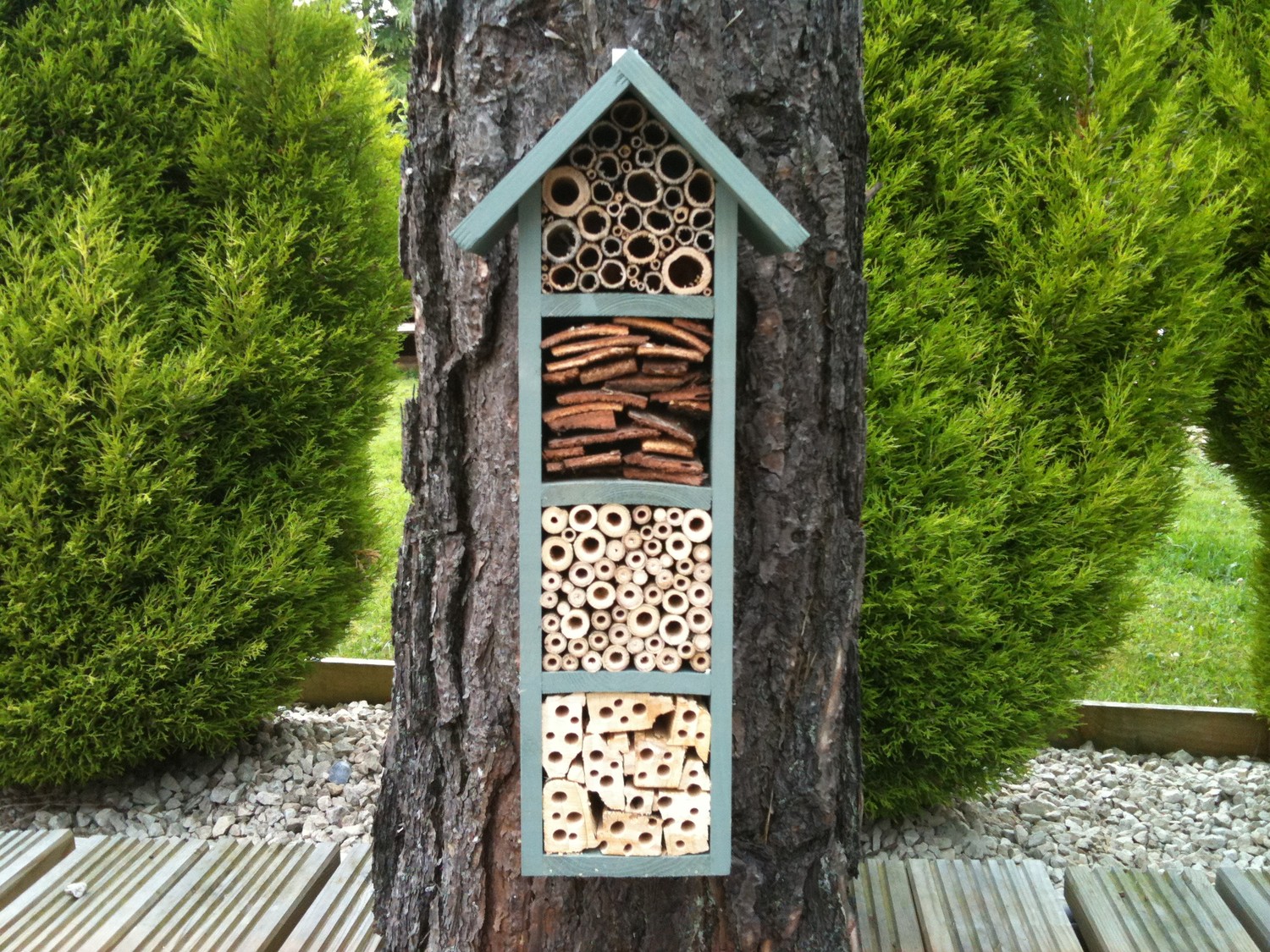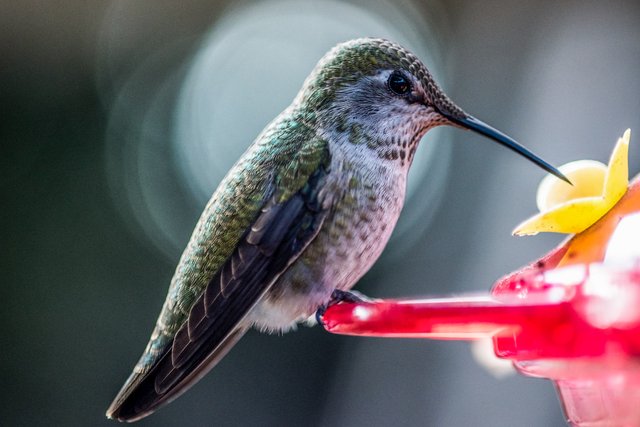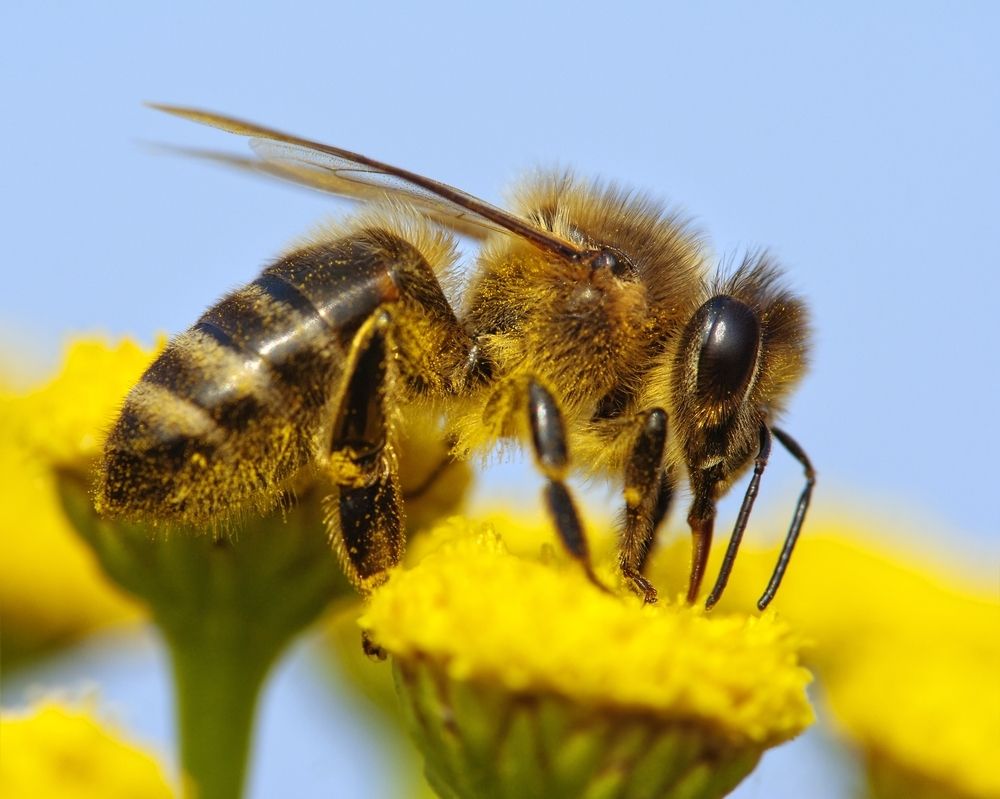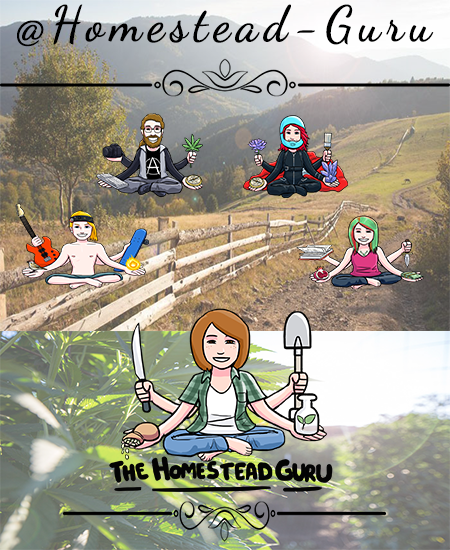Get Hummingbirds, Bees, & Butterflies to Your Garden By Attracting Pollinators
Attracting pollinators such as bees, butterflies, and hummingbirds to your garden can be as easy as planting flowers full of nectar, but there are a few key things you can do to keep them around and coming back!
1. Provide shelter
Butterflies, bees and other pollinators need shelter to hide from predators, get out of the elements and rear their young. Let a hedgerow or part of your lawn grow wild for ground-nesting bees. Let a pile of grass cuttings or a log decompose in a sunny place on the ground. Or, allow a dead tree to stand to create nooks for butterflies and solitary bees.

2. Provide water
Water is vital for all life, so it is necessary to keep water around for your pollinators. On hot days pollinators can tire out quickly and without access to a water source pollinators can overheat and die. Butterflies are attracted to muddy puddles which they will flock to for salts and nutrients, as well as water. Hummingbirds particularly like a gentle mist from a fountain or waterfall. The basic requirements for a bee water source is that the bees have a good footing so that they don't fall in and drown, and that the water stays fresh. A small artificial pond is a beautiful and self sustaining solution or simply provide a bird bath!

3. Don’t Spray Pesticides
Pesticides are now labeled for their direct bee toxicity which kills 50% of bees. Pesticides are also being evaluated for their sub-lethal effects on bees side effects including: impaired learning, impaired foraging and homing ability, and reduced immune response are all possible effects of pesticide exposure. Lifespan is also affected by pesticide exposure; in some cases treated bees live only a few days, rather than their normal 6-week lifespan during the foraging season. Pesticides are not only a huge problem for bees, but other pollinators as well. If you want to keep the pollinators coming back happy and healthy eliminate them from your garden!
4. Plant nectar and pollen-rich flowers
As with butterflies, hummingbirds especially appreciate large clusters of their favorite plants, so they can flit from one to another. Try to fill your border with a mixture of plant heights, since some species of hummingbirds prefer to graze lower than others. Hummingbirds love tubular flowers because of their long proboscis and also have a preference for red flowers, although they will visit flowers of all colors. There are several species of hummingbirds and they each have their plant preferences, but all hummingbirds need nectar rich plants such as hollyhocks, butterfly weed, and bee balm. Butterflies are partial to flowers with flat umbels, where they can stop and warm their wings as well as grab a snack on the fly. Bright colors will catch their eye in flight, so consider planting your butterfly plants such as yarrow, blanket flower, and blackeyed suzan’s in swaths large enough for them to spot. Many of the plants that are good for butterflies will also bring the bees swarming! For a more permanent garden look to plant many perennials.

5. Plant an Herb Garden
Dill, parsley, lavender, and fennel all have those wonderful flat, umbel landing pads butterflies love, as well as plenty of nectar. You can include them in a designated herb garden or incorporate these herbs into any border. Although the caterpillars of many popular butterflies will also feed on your herb plants it will not be catastrophic for your herbs as the caterpillars will quickly turn into butterflies and your herbs will regrow!
As food sources for pollinators are depleting they are counting on us to help keep them alive so they can continue to do their job which serves us by providing our food! You can make your garden a long term haven for these essential pollinators by making small changes to your garden and consciously making an effort to provide food, water and shelter for them.
Visit the site here!

Hello! Welcome to Steemit.
In order to prevent identity theft, identity deception of all types, and content theft we like to encourage users that have an online identity, post for a website or blog, are creators of art and celebrities of all notoriety to verify themselves. Verified users tend to receive a better reception from the community.
In order to confirm your authorship of the content, please make a mention about Steemit or add a hyperlink to Steemit on:
https://thehomestead.guru/
You can remove this mention once we confirm the authorship.
Thank you.
More info: Introducing Identity/Content Verification Reporting & Lookup
That looks like a great weekend project for me and my son. Thank you for sharing! Upvoted and Followed by @cryptoryno33
Hi! I am a robot. I just upvoted you! I found similar content that readers might be interested in:
https://thehomestead.guru/attract-pollinators/
thans
Great post. I am new to Steemit but will post about my mason bees. I get 500 cocoons each spring and return about 1500 cocoons to them. It is my small part in assisting the pollination of our fruit orchards in Washington State, USA.
We use Mason bees as they pollinate many times more than regular honey bees. I like your "bee house." I'll follow you to see what you are up to.
Thanks for an attractive and informative post.
Great post! I already have made my yard a place for the birds where I feed them and provide fresh water. I've been thinking of doing something for the bees and hummingbirds for a while now, and your post has inspired me to take action and plant some of the flowers that they love most. Thank you!
nice.
carry on
great input ....
Pollinators???Lol
Nice anyway!!!!
Vote me
Like seriously couldn't stop Reading.I only knew of flowers that are brightly colored and nectar plants.So now i am enlightened.Good piece Op.